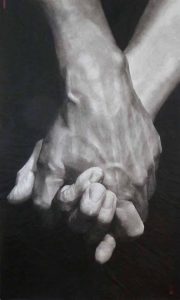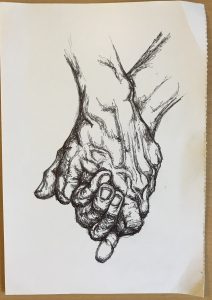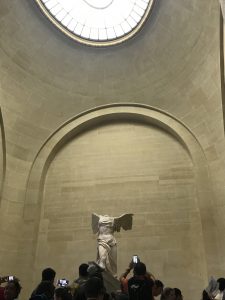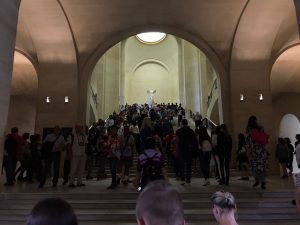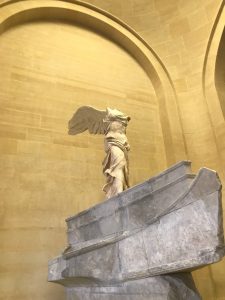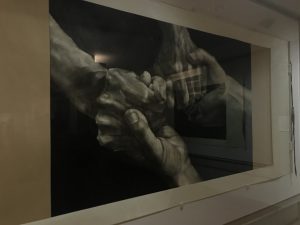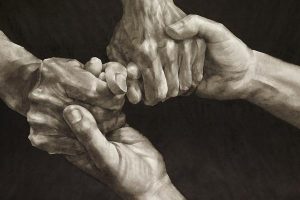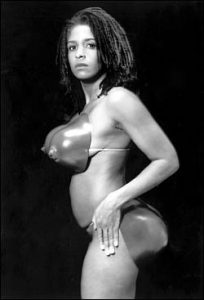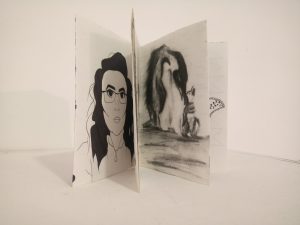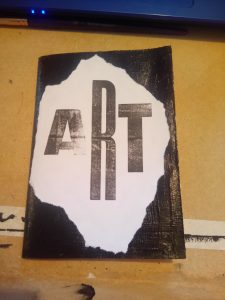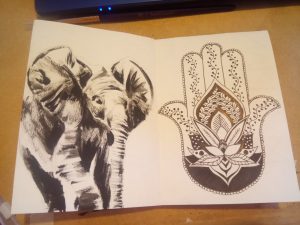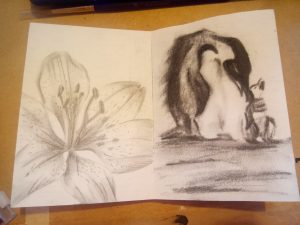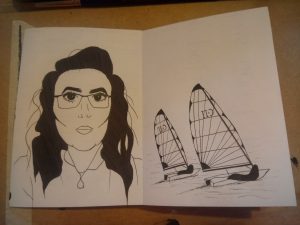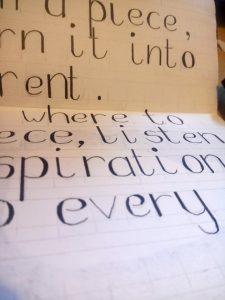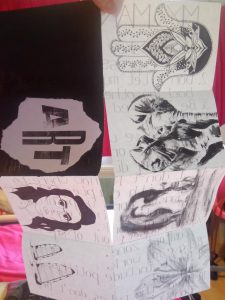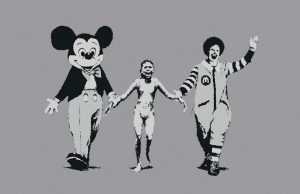Appropriation: “The deliberate reworking of images and styles from earlier, well-known works of art.”
I wanted to combine this task with the work I am currently exploring so I chose to appropriate an image from an artist I am researching into at the moment. I chose the piece ‘Journey’ by Qu Leilei, his piece is ink on paper, size 150 x 91 cm. I chose this piece because of its subject of hands, something I have always been interested in and tried to incorporate into my own work somehow. I re-created the piece in my own style with Biro on A5 paper. I used the original piece as a reference for my own drawing in regards to the shadows and tones. I chose this medium because when it comes to my own work, I tend to draw hands in this way. I enjoy the freeness of the ‘squiggly’ lines as well as the way they layer to create the tones. It takes some inspiration from Henry Moore and his ‘The Artist’s Hand” collection. I always try to capture the same emotions in my drawings, the same way Moore wanted in his own work. This free but controlled line expression adds some kind of roughness to the work, that isn’t necessarily in Leilei’s original piece as that one looks smooth and defined.
Bibliography
LEILEI, Q. 2013. Journey [photograph] – Accessed 25th November 2017

